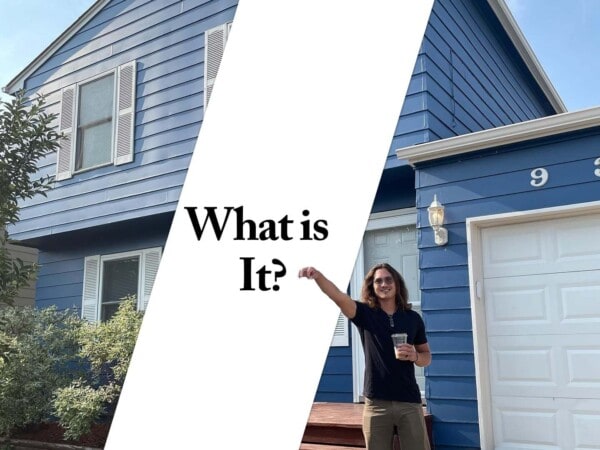How Seller Financing in Real Estate Works

Buying a property is probably one of the greatest financial decisions you will make for yourself and your family. It doesn’t matter if you’re new to the real estate market and looking to purchase your first home or have bought and sold a few houses. Pinpointing the best, most convenient location and assessing a home’s future potential market value are not the only major decisions you must contend with.
Financing is undoubtedly the biggest stressor attributed to purchasing a property. Unfortunately, with the high cost of real estate, only a few people manage to save enough money to purchase a house for cash. So despite saving as much as possible to put down a deposit with the hope of bringing down the amount you will ultimately pay in interest, you still need to decide how to finance the balance.
You can take out a mortgage which is a loan from a bank or a lender specifically to buy a house. However, have you considered seller financing? This is another option if you’re in the market to buy a property.
What Is Seller Financing?

Seller financing, as the name suggests, is a method of financing a property. But, instead of applying for a home loan at a bank or lender, the seller offers financing. Most people use terms like a bond for title, owner financing, or purchase money mortgage to refer to seller financing.
Seller Financing Terms
Leveraging seller financing to purchase a property requires an in-depth understanding of the terms commonly used in this unique financing method. Some common terms you should know include:
Amortization Period
This is the fixed amount of time it takes to repay your loan. Your monthly premiums are usually calculated based on the amortization period. To determine how much you must pay each month, the seller divides the loan amount (including interest) by the amortization period to determine your monthly premiums.
Balloon Payment
Most owner financing arrangements come with a balloon payment. This means that after an agreed-upon time, usually five years, the buyer must pay the seller a lump sum.
Deposit or Down Payment
Buyers are usually required to pay a down payment when closing the deal. This amount is based on a percentage of the property’s value. Still, unlike with a traditional lender, there isn’t a minimum amount you must pay, so there is room for negotiation to agree on how much the deposit should be.
Earnest Money Deposit
Not to be confused with a down payment, an earnest deposit is a show of good faith. It’s typically a small amount – about 1% – 2% of the purchase price – and is paid by the buyer to demonstrate their intent and commitment to purchasing the property. If the buyer goes back on the deal, the seller may keep the money.
Interest Rate
Like traditional mortgages, seller financing also carries interest. Often, the interest rates on owner financing are higher than that of conventional home loans. Still, since the buyer deals one-on-one with the seller, the buyer can negotiate an affordable interest rate.
Loan
To calculate the loan amount a buyer needs, take the home’s purchase price minus the down payment, earnest money, and any other payments the buyer made upfront. This will result in the loan amount.
Loan Term
The amount of time a buyer is given to repay its debt is called the loan term. Usually, the term of a seller financing agreement is shorter than a traditional mortgage.
Purchase Price
The purchase price is the amount the property will be sold for, which is usually negotiable. Once the purchase price has been agreed on, it must be documented in the seller financing contract to calculate the loan amount and interest.
How Seller Financing Works

Seller financing is typically more straightforward and quicker to secure since the buyer transacts directly with the seller without the interference of banks and lenders. This may be a fantastic option if a buyer doesn’t qualify for a traditional mortgage.
Even though the seller may perform a credit or background check, they are likely to be more lenient. In addition, the process may also be faster since inspecting or appraising the property is not required unless the buyer requests it.
Like a traditional mortgage, the buyer will need to put down a deposit or down payment, and the seller may extend credit that covers the property’s purchase price minus the deposit. However, the seller financing contract period is typically shorter than a traditional loan and often comes with a balloon payment that the buyer must pay after about five years.
Like any other loan, the buyer and the seller will sign a contract with terms and conditions, but these are typically more flexible than a traditional loan or mortgage since it is up to the buyer and seller to agree. Afterward, the buyer will make monthly payments to the seller until the end of the term, including paying property tax and insurance.
In addition, you may need to apply for a traditional mortgage at the end of the term. This may be in your favor because your credit may have improved, and you may be more likely to qualify for a home loan. Also, since you have been paying the seller, the amount you owe will be less, so you’re likely to require a smaller mortgage.
Where to Find Seller Financing Properties
While many people may want to sell their property, not all sellers will offer seller financing. Therefore, knowing where to look for owner-financed properties would be helpful if the buyer is looking to purchase a property using a seller financing arrangement.
1. Browse Property Listing Websites
The first method is to look online. Some property listing websites include seller-financed homes. Depending on the website, home buyers can use the filter function to isolate all owner-financed homes. In most cases, buyers will have to click on the properties they like and read the description to determine if the seller offers a finance agreement.
Quick note. If you’re after seller financing properties, use our Miami for sale listing page and filter out by typing “seller financing” on the keyword filter box.
2. Work with a Real Estate Agent
Working with a real estate agent is a good idea whenever a buyer is in the market to purchase a property since they know the ins and outs of the industry. In addition, they are the first to know when a home goes on the market and can offer insight and guidance along the process.
To this end, they will have a better idea of which properties may be owner financed and can even negotiate on behalf of the buyer to get them the best possible deal.
3. Drive or Walk Around the neighborhoods You Are Interested In
Make a list of potential neighborhoods you’d like to live in and take some time driving around. While driving, look for signs outside houses that say ‘For Sale by Owner’ or ‘For Rent’. If these homes look appealing, note the owner’s details and contact them. They may be open to entering into a seller financing agreement.
Driving around also allows you to familiarize yourself with the neighborhood, and you’re likely to stumble upon properties that may not be listed or that you missed online.
Don’t shy away from a property that is advertised to rent. If it’s a home you may be interested in purchasing, you have nothing to lose by contacting the owner and expressing your interest in buying the property. In addition, some landlords may be open to selling the property, especially if it’s been vacant for some time.
4. Network
Word of mouth is a powerful tool, and you can use it to secure a home through seller financing. Talk to your friends, family, and colleagues and let them know you want to purchase a house. You can also attend community meetings and join online real estate forums. Connecting with the right people can help you find your dream home that can be owner financed.
Seller Financing Advantages for the Seller
While many property owners may be reluctant to enter into a seller financing agreement, it does come with several benefits. These include:
- A faster sale. The sale can close faster since there are fewer background checks and no need to wait on loan approval from a bank which typically takes time.
- No appraisal requirement. The seller can sell the house as it is since they are not required to go through an appraisal process. Traditional lenders may require the owner to do repairs before approving a loan, but this is not the case when entering a seller financing agreement.
- Seller retains the title deed. The seller usually has the right to retain the title deed, deposit, and whatever repayments the buyer did make if the buyer defaults on the loan.
- Seller receives interest percentage. It can be seen as an investment since the seller earns interest.
- More buyers. There are more potential buyers since many people may not qualify for a traditional mortgage. This increases the chances of you selling your property.
Seller Financing Disadvantages for the Seller
Offering seller financing may seem like a good option if you’re eager to sell your property quickly. Still, it’s essential to do your due diligence and vet potential buyers before signing the contract. Possible disadvantages include the following:
- Sellers don’t get the total amount of cash upfront. If a seller needs the money to buy another property or invest elsewhere, there may be better options.
- It is a risk for sellers if the buyer defaults. Although you get to retain the title, deposit, and any monies paid, you will still be responsible for the property and may have to find another buyer.
- Sellers are responsible for any repair costs. If the buyer defaults and vacates the property, leaving it in bad condition, the seller will need to handle the property’s repair costs.
Seller Financing Advantages for the Buyer
With a low credit score, there are several options to secure a personal loan, like applying online with CreditNinja. However, there are fewer financing options if you want to purchase a home. Seller financing allows people who don’t qualify for a mortgage with traditional lenders to become homeowners.
Some of the benefits of going this route to finance your property include the following:
- Lower down payments. The deposit or down payment is typically lower as there isn’t a minimum percentage that the buyer has to pay.
- Easy to Qualify. People who don’t qualify for financing from traditional lenders can buy a home.
- Negotiable terms. The seller is usually more flexible and willing to negotiate the terms.
- Reduced closing costs. The costs associated with closing may be reduced since there are no bank fees and appraisal costs. The buyer also has the choice to do away with the inspection, which further reduces costs.
- Faster purchase. The process is faster since you’re dealing directly with the seller.
Seller Financing Disadvantages for the Buyer
Buying a property is expensive, and in most cases, traditional lenders require a deposit of up to 20% of the property’s value. Seller financing can be an excellent option, but it does come with a few drawbacks. Keep the following in mind if you plan on entering into an owner-financing agreement:
- High interest rates. The interest rates are usually higher than traditional mortgages.
- Unexpected repairs. If the buyer chooses to forgo the home inspection, they may be faced with costly repairs they were unaware of.
- High balloon payments. A buyer will likely have to make a typically high balloon payment.
- Background check requirement. Since it is a risk for the seller, they may want to do background checks on the buyer to ensure the buyer can afford and will honor the loan. Sometimes, the buyer may find the seller to be intrusive.
- Not protected by federal regulations. Fewer federal regulations protect the buyer, depending on where you live.
Conclusion
Seller financing is a method worth exploring for buyers and sellers in real estate. As property costs soar, many people don’t qualify for traditional mortgages, making it difficult to buy and sell properties.
As a result, owner financing can bridge this gap, bringing buyers and sellers together privately to work out a deal. Before entering into an owner-financed agreement, both parties must be comfortable with the terms.



